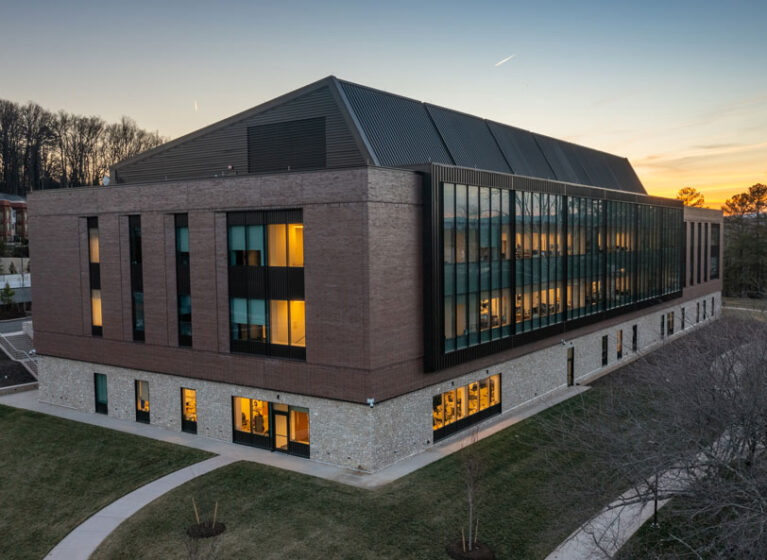
The clinical pathway for someone who experiences a fragility fracture isn’t always clear. A new clinic at UVA Health is working to change that — by identifying, evaluating, and treating patients at risk for fragility fractures earlier.
Fragility fractures are those resulting from minimal trauma, like a fall from standing height, or no identifiable trauma. They’re a symptom of compromised bone health and a sign the person is at risk for more fractures.
The only healthcare institution in Virginia recognized as Premier Certified by the International Geriatric Fracture Society (IGFS), UVA Health has created the Fragility Fracture and Bone Health Clinic — the only one of its kind in the area — to establish a pathway for elderly patients identified as at risk for fragility fractures.
The clinic’s mission is to evaluate and treat at-risk patients before they experience a major fracture, like a broken hip. A major fracture like this is a major health concern because it often results in significant loss of autonomy and deterioration of quality of life.
“The goal of the clinic is to prevent more major fractures from occurring so patients have better long-term outcomes,” says David Weiss, MD, orthopedic trauma surgeon and director of the UVA Orthopaedic Trauma Division. “We’re working off the adage that an ounce of prevention is worth a pound of cure.”
Identifying Patients at Risk for Fractures Earlier
The Fragility Fracture and Bone Health Clinic opened in August. Prior to its opening, elderly patients in the region who sustained a lower-acuity fracture to the wrist, shoulder, or spine would typically receive treatment and then be referred back to their primary doctor for follow-up care, says Seth Yarboro, MD, orthopedic trauma surgeon and quality officer for the UVA Department of Orthopaedics.
Now, the clinic receives referrals for patients with these types of injuries, or for those flagged as at risk for a major fracture by a bone density test.
“We’re identifying people who’ve had injuries that might lead to these more devastating hip fractures that would have a bigger impact on their lives or their families’ lives,” Weiss says. “That was the genesis for this clinic.”
It’s important to recognize the risk related to bone health as people age, Yarboro adds. Fragility fractures can be life-changing, costly, and are often associated with significant morbidity.
Indeed, about one-third of elderly patients with hip fractures die within a year of their injury, Weiss says, not necessarily due to the hip fracture, but because it’s a frailty marker.
He adds: “They just continue on a downward slope.”
A “One-Stop Shop” for Patients With Bone Health Issues
Many patients who receive treatment for an orthopedic trauma have underlying bone health issues, like osteopenia or osteoporosis. That’s why services at the clinic start with an evaluation, often including a bone density test, followed by interventions, both lifestyle- or medication-based.
Because the clinic, run by Lara Myers, ACNP, MSN, is part of UVA Health’s new 200,000-square-foot musculoskeletal center, patients can receive physical and occupational therapy while there, as well as access pharmacy, prosthetics, or orthotics services.
“Not only do we have all the resources in one place, but we have the commitment and dedication of our staff to try to streamline the visit as much as possible,” Weiss says. “We want patients to accomplish as much as possible while they’re here, and get them seen as quickly as possible — usually within a week.”
Future goals include using best practice advisories (BPAs) in Epic to alert clinicians of patients who may be good candidates for clinic referral.
“Implementing a clear pathway for these patients to minimize risks for future fractures allows us to have a consistent approach to providing comprehensive care,” Yarboro says. “If we’re having to essentially address this through a different pathway each time, there’s not that level of consistency.”
He adds: “I think we’ll learn that a lot of patients — whether they have fractures around their shoulder, hip, or wrist — really benefit from the comprehensive care that this clinic helps us provide.”
Clinical Trial Enrolling Patients With Sacral Fragility Fractures
UVA Health is also participating in a SI-BONE®-sponsored clinical trial involving a new threaded implant called the iFuse-TORQ™. The implant is cleared by the FDA for use in the pelvis to treat sacral fragility, or sacral insufficiency, fractures.
Sacral fragility fractures can cause substantial pain and disability. While most of these fractures eventually heal, patients may be unable to get out of bed or walk for weeks at a time because they’re unable to bear weight. Sometimes surgery is indicated and sometimes it isn’t.
The iFuse-TORQ implants are made from titanium and have a porous surface designed to work with osteoporotic or osteopenic bone.
The multicenter Sacral Fracture Fusion/Fixation for Rapid Rehabilitation (SAFFRON) study is looking at patients with sacral fragility fractures to determine whether using iFuse-TORQ implants in surgical treatment speeds up recovery compared with patients with these types of fractures who don’t have surgery.
Regardless of whether they’ve had surgery, study participants are assessed at six weeks, three months, six months, and one year after treatment to see if they have pain and to determine their quality of life. They also undergo three functional assessments, including a balance test. In addition, participants who had surgery have a CT scan at their one-year follow-up.
“For patients who have these types of fractures and have trouble ambulating, if they choose to participate in this study and undergo surgery, we can do testing to see if they recover quicker with the new implant,” Weiss says.